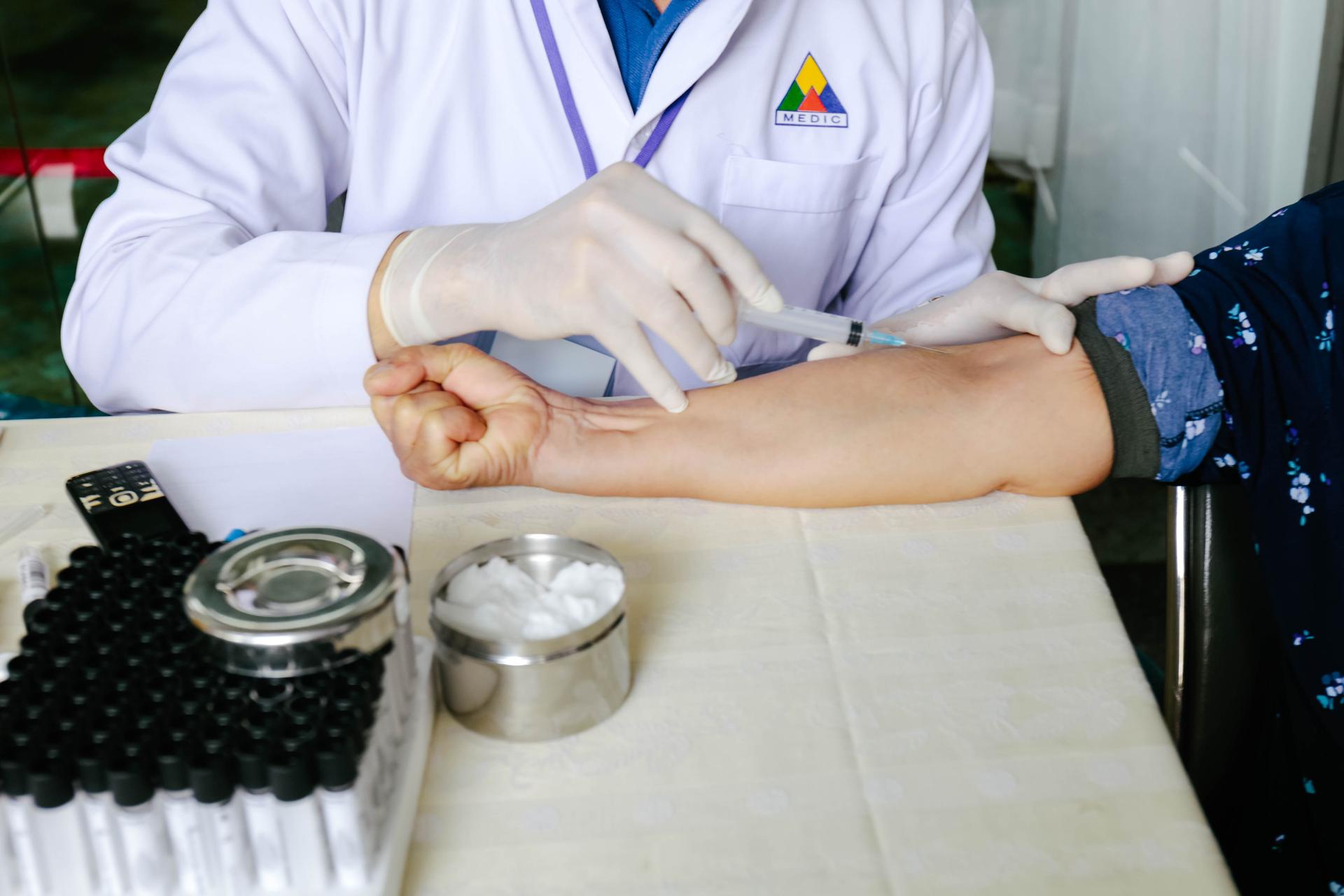The 6-Second Trick For Northeast Medical Institute - New Haven Campus Phlebotomy Course & Cna Class
The smart Trick of Northeast Medical Institute - New Haven Campus Phlebotomy Course & Cna Class That Nobody is Talking About
Table of ContentsThe Buzz on Northeast Medical Institute - New Haven Campus Phlebotomy Course & Cna ClassThe Ultimate Guide To Northeast Medical Institute - New Haven Campus Phlebotomy Course & Cna ClassThe 20-Second Trick For Northeast Medical Institute - New Haven Campus Phlebotomy Course & Cna ClassSome Known Details About Northeast Medical Institute - New Haven Campus Phlebotomy Course & Cna Class All About Northeast Medical Institute - New Haven Campus Phlebotomy Course & Cna ClassNortheast Medical Institute - New Haven Campus Phlebotomy Course & Cna Class - Truths
The usage of such tools ought to be accompanied by various other infection avoidance and control methods, and training in their usage. Not all safety tools apply to phlebotomy. Before picking a safety-engineered tool, individuals need to thoroughly examine offered devices to identify their proper usage, compatibility with existing phlebotomy practices, and effectiveness in safeguarding staff and clients (12, 33).For settings with low sources, price is a driving factor in procurement of safety-engineered tools. Where safety-engineered tools are not offered, experienced use of a needle and syringe is appropriate.
Among the necessary pens of quality of treatment in phlebotomy is the participation and collaboration of the client; this is equally beneficial to both the health and wellness worker and the person. Clear information either composed or spoken need to be available to every individual that undertakes phlebotomy. Annex F provides sample text for describing the blood-sampling treatment to a person. labelling); transportation conditions; interpretation of results for scientific administration. In an outpatient department or facility, supply a specialized phlebotomy cubicle containing: a clean surface with two chairs (one for the phlebotomist and the other for the patient); a hand wash basin with soap, running water and paper towels; alcohol hand rub. In the blood-sampling space for an outpatient department or facility, provide a comfortable reclining couch with an arm remainder.
Northeast Medical Institute - New Haven Campus Phlebotomy Course & Cna Class Can Be Fun For Everyone
Ensure that the indicators for blood sampling are plainly defined, either in a composed method or in documented guidelines (e.g. in a research laboratory form). Gather all the tools needed for the treatment and place it within secure and simple reach on a tray or cart, ensuring that all the things are clearly visible.
Present on your own to the individual, and ask the individual to mention their full name. Check that the research laboratory kind matches the person's identification (i.e. match the person's information with the lab type, to ensure precise recognition).
Make the person comfy in a supine position (if feasible). The individual has a right to refuse an examination at any kind of time before the blood sampling, so it is important to ensure that the patient has actually recognized the treatment - PCT Training.
Indicators on Northeast Medical Institute - New Haven Campus Phlebotomy Course & Cna Class You Need To Know
Prolong the client's arm and inspect the antecubital fossa or forearm. Situate a capillary of a great dimension that is noticeable, straight and clear. The diagram in Area 2.3, shows common placements of the vessels, however many variations are feasible. The typical cubital capillary exists between muscle mass and is generally the most simple to penetrate.
DO NOT place the needle where blood vessels are drawing away, since this enhances the possibility of a haematoma. The vein should show up without applying the tourniquet. Locating the capillary will certainly aid in figuring out the proper size of needle. Apply the tourniquet concerning 45 finger widths over the venepuncture site and re-examine the vein.
Samplings from main lines carry a threat of contamination or incorrect lab test outcomes. It is appropriate, however not optimal, to draw blood specimens when initial presenting an in-dwelling venous gadget, prior to linking the cannula to the intravenous liquids.
Not known Facts About Northeast Medical Institute - New Haven Campus Phlebotomy Course & Cna Class
Failure to allow adequate contact time increases the risk of contamination. DO NOT touch the cleaned up site; in specific, DO NOT put a finger over the blood vessel to guide the shaft of the exposed needle.
Ask the person to create a clenched fist so the blood vessels are more famous. Get in the vein quickly at a 30 level angle or less, and remain to present the needle along the blood vessel at the most convenient angle of access - Phlebotomy Courses. When adequate blood has been gathered, release the tourniquet prior to withdrawing the needle
Facts About Northeast Medical Institute - New Haven Campus Phlebotomy Course & Cna Class Uncovered
Withdraw the needle gently and apply mild pressure to the website with a tidy Resources gauze or dry cotton-wool ball. Ask the person to hold the gauze or cotton wool in position, with the arm prolonged and raised. Ask the client NOT to flex the arm, since doing so creates a haematoma.

The Greatest Guide To Northeast Medical Institute - New Haven Campus Phlebotomy Course & Cna Class
Do not press the syringe plunger due to the fact that additional pressure boosts the risk of haemolysis. Where possible, keep televisions in a rack and move the rack in the direction of you. Inject downwards into the ideal coloured stopper. DO NOT remove the stopper since it will certainly launch the vacuum cleaner. If the example tube does not have a rubber stopper, infuse extremely slowly into the tube as decreasing the stress and velocity used to transfer the specimen decreases the danger of haemolysis.
